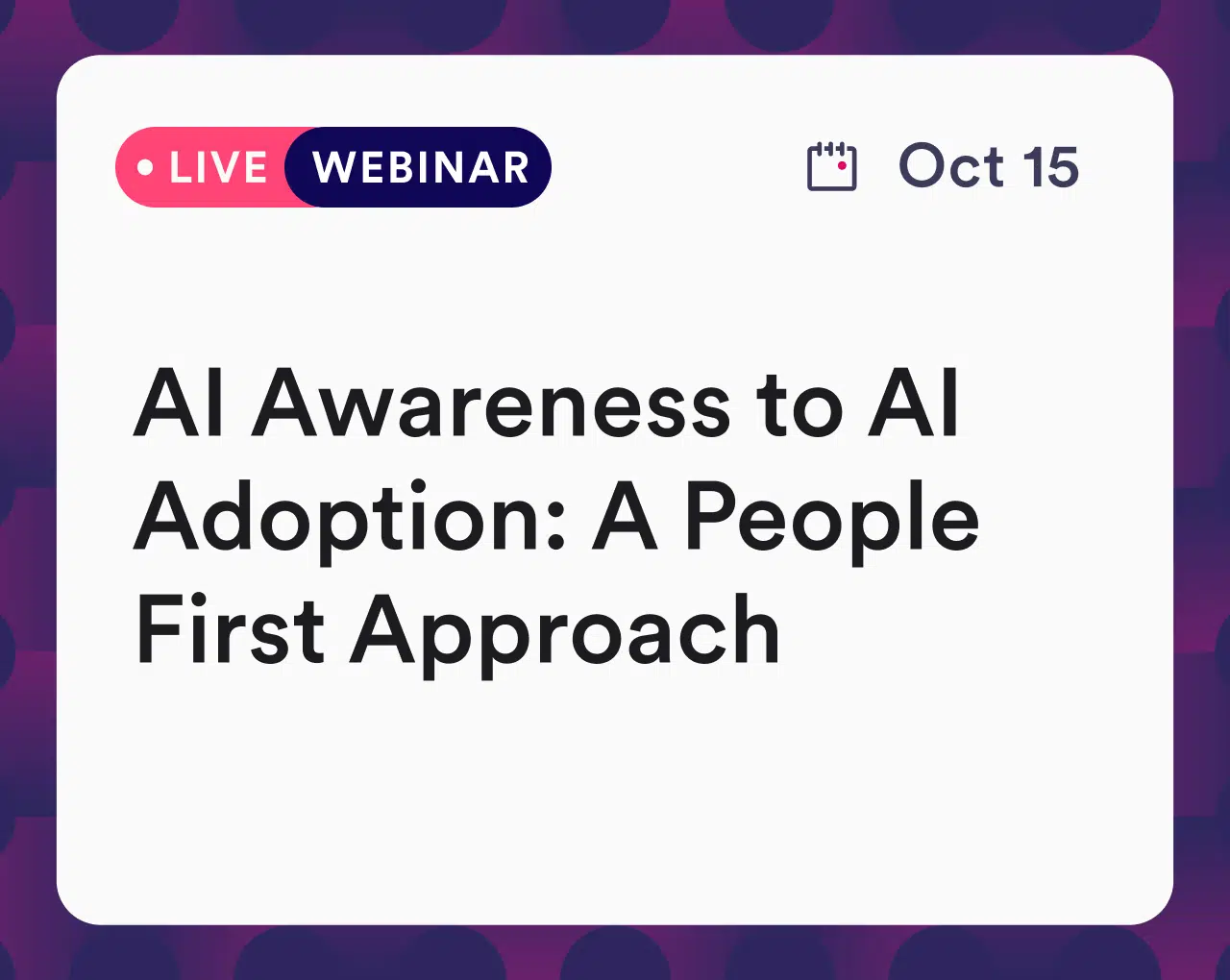AI offers incredible potential for employee growth and leadership. But as in many fields, the challenge is identifying how to harness that potential for maximum benefit.
To help organizations navigate this technological Wild West, Hone held a half-day online event this month: Forward: Upskilling & Performance in the Age of AI. Over seven sessions, we heard from leaders in HR and L&D about how they’re addressing skills gaps, boosting performance, and building high-performing teams in a fast-changing work environment impacted by AI.
These are a few noteworthy ideas from the sessions that can help light the path forward as we prepare for an AI-powered future.
Two waves of AI transformation
In our first session, Markus Bernhardt of Endeavor Intelligence said he sees two large-scale changes happening simultaneously. What we might call the “surface wave,” which is the one getting most of the attention: new AI-powered features added to platforms, headlines about how AI is going to transform work as we know it, and major profiles of AI-first companies and founders.
Organizations in the midst of this wave might be piloting different tools and workflows while at the same time trying to keep up with the relentless tide of emerging solutions and features.
He described the second wave as “the fundamental rewiring of how work gets done and how decisions are made.” And that is the real challenge.
This deeper strategic transformation requires serious organizational soul-searching. Leaders need to figure out if they intend to use AI to optimize existing processes or completely alter their business model, how AI could potentially change roles and responsibilities in the workforce, and where it could provide a long-term competitive advantage.
A poll during the session showed that the largest group (about a third) is responding to the surface wave, with the rest divided about equally at different points on the strategic wave. But as AI matures and leaders continue to learn more about and test AI, we can expect this distribution to shift.
Using Intentionality to navigate AI uncertainty
Everyone likes clarity, especially when it comes to the future of their organization. But the reality is that AI is developing and moving too rapidly for anyone to know exactly what their company will look like in a few years.
Managers are on the front lines of navigating through this fog: they’re the ones fielding questions from employees and addressing their concerns. They serve as a bridge between AI strategy and execution, sending concerns and ideas up the chain and communicating guardrails and goals from the top.
Empowering managers to provide space for experimentation, develop policies for navigating AI ethically and effectively, and aligning AI tools and workflows with organizational goals successfully positions them as valuable, trusted guides as organizations chart a course.
The “why” is critical
In our session on HR as a strategic catalyst for change, Jerremy Howell, former CPO at BarkleyOKRP, noted that leaders usually spend 80% of the time talking about change and 20% on why it’s happening. With AI, those percentages should be flipped to gain trust and support among the workforce.
This reversal acknowledges that AI transformation heralds an existential shift in the workplace. When employees understand the strategic opportunities and competitive pressures driving AI adoption, they’re more likely to see themselves as partners in organizational evolution rather than passive recipients of it.
Knowing where to place humans in AI processes is critical
AI should never be completely autonomous. Organizations must find the optimal points to implement human oversight, curation, and decision-making to ensure outputs are accurate, relevant, efficient, and ethical.
As employees shift from task execution to orchestration, innovation, and quality assurance, this will require more than technical expertise. Employees who can fine-tune AI capabilities to meet business goals will give organizations a competitive advantage, even amid rapidly changing market conditions, industry trends, and technological change. As Markus Bernhardt put it, “We need people who look at the outputs and who decide whether they’re in line with what we’re expecting, whether they’re improving, whether they’re getting worse, and who are checking that when the models in the background get updated.”
Human skills matter more than ever
If there was one common theme across the day, it was that human skills such as creative thinking, resilience, curiosity, empathy, and analytical thinking are essential for organizations that want to thrive in this new era. “The humans are the ones that drive the change,” said Darren Nerland, Head of Global Leadership & Talent Development, ECommerce, and IT Services at Amazon. “They resolve the ambiguities. They ignite the innovation where it counts.”
Connecting the dots between problems and solutions has never been a straight line, and that’s even more true now as we face the vast possibilities of AI. The ability to design and take calculated risks, learn from failures, and communicate findings effectively will be absolutely critical in this changing world.
But to make an impact, these “soft” skills must be more than just buzzwords. They should be translated into clear behaviors and activities that can be implemented into learning and development. When embedded into training programs and integrated into continuous feedback, they become the metrics that help drive organizational growth and AI success.
Facing the road ahead—together
Change is inevitable. But even people who thrive on change may be thrown off by AI’s rapid pace. Hone is dedicated to helping leaders in HR and L&D grapple with these challenges by sharing perspectives and experiences across industries and organizations. Through our offerings and ongoing conversations, we aim to transform uncertainty into opportunity, helping organizations capitalize on AI’s potential for upskilling and development while maintaining the human-centered approaches that make training truly effective.
As a result, we’re not just passively adapting to change—we’re shaping how AI and human expertise can work together to create more effective and meaningful learning experiences for everyone. By combining live, human-led classes with on-demand, AI-powered learning experiences, we give employees multiple ways to build the skills required in the workplace of today and tomorrow. To learn more and try Hone at no cost, visit honehq.com/request-trial/.













